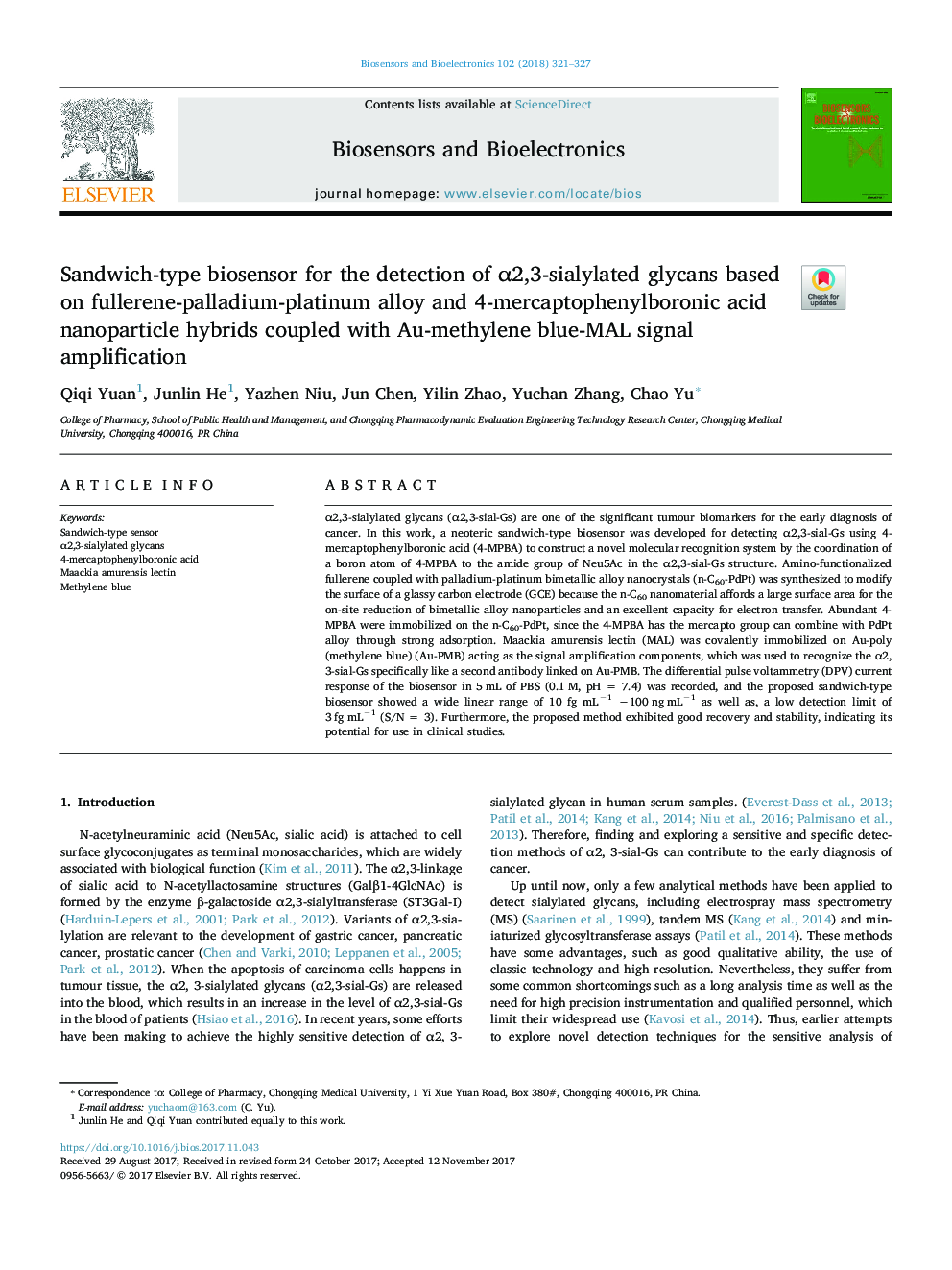| Article ID | Journal | Published Year | Pages | File Type |
|---|---|---|---|---|
| 7229938 | Biosensors and Bioelectronics | 2018 | 7 Pages |
Abstract
α2,3-sialylated glycans (α2,3-sial-Gs) are one of the significant tumour biomarkers for the early diagnosis of cancer. In this work, a neoteric sandwich-type biosensor was developed for detecting α2,3-sial-Gs using 4-mercaptophenylboronic acid (4-MPBA) to construct a novel molecular recognition system by the coordination of a boron atom of 4-MPBA to the amide group of Neu5Ac in the α2,3-sial-Gs structure. Amino-functionalized fullerene coupled with palladium-platinum bimetallic alloy nanocrystals (n-C60-PdPt) was synthesized to modify the surface of a glassy carbon electrode (GCE) because the n-C60 nanomaterial affords a large surface area for the on-site reduction of bimetallic alloy nanoparticles and an excellent capacity for electron transfer. Abundant 4-MPBA were immobilized on the n-C60-PdPt, since the 4-MPBA has the mercapto group can combine with PdPt alloy through strong adsorption. Maackia amurensis lectin (MAL) was covalently immobilized on Au-poly (methylene blue) (Au-PMB) acting as the signal amplification components, which was used to recognize the α2, 3-sial-Gs specifically like a second antibody linked on Au-PMB. The differential pulse voltammetry (DPV) current response of the biosensor in 5 mL of PBS (0.1 M, pH = 7.4) was recorded, and the proposed sandwich-type biosensor showed a wide linear range of 10 fg mLâ1 â100 ng mLâ1 as well as, a low detection limit of 3 fg mLâ1 (S/N = 3). Furthermore, the proposed method exhibited good recovery and stability, indicating its potential for use in clinical studies.
Related Topics
Physical Sciences and Engineering
Chemistry
Analytical Chemistry
Authors
Qiqi Yuan, Junlin He, Yazhen Niu, Jun Chen, Yilin Zhao, Yuchan Zhang, Chao Yu,
